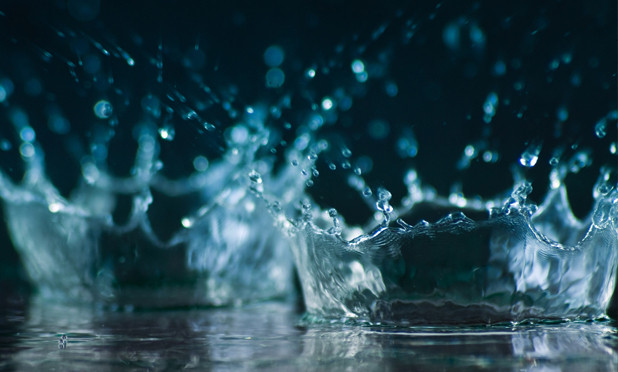In July of 2018, the Port of Corpus Christi announced they were seeking a permit for a desalinization plant proposed for construction on Harbor Island in Port Aransas, Texas that would allow an average daily output flow of up to 95,600,000 gallons per day. Currently, the plant has yet to be designed there are many unknowns.
Seawater intake and output of brine have the potential to impact larval fish and invertebrates. The circulation of the estuaries, ocean and ship channel would play a role in the magnitude of the impact. The following studies are relevant research that have been completed or are ongoing in the Harbor Island area.
In addition, Dr. Ed Buskey from the University of Texas Marine Science Institute prepared a white paper that summarizes the "Recruitment of estuarine dependent species of commercial and recreational importance through the Aransas Ship Channel." Click here to download the white paper.
In October of 2019, a report prepared by Dr. Jordan Furnans entitled "Desalination Brine Discharge Modeling – Corpus Christi Bay System" was submitted to the Port of Corpus Christi.
In March of 2021, Dr. Kristin Nielsen from the University of Texas Marine Science Institute prepared a report entitled "Proposed Harbor Island Saltwater Reverse Osmosis Desalination Facility: A Prospective Evaluation of Ecotoxicological Risk"
In March of 2021, Dr. Clint Dawson, Mark Loveland and Eirik Valseth from the Oden Institute for Computational Engineering and Sciences, University of Texas at Austin prepared a report entitled "Potential Effects of Deepening of the Aransas Ship Channel on Particle Transport: Implications for Recruitment of Estuarine Dependent Larvae."
In January of 2022, Drs. Eirik Valseth and Clint Dawson from the Oden Institute for Computational Engineering and Sciences, University of Texas at Austin prepared a report entitled "Potential Effects of Deepening of the Corpus Christi Ship Channel on Hurricane Storm Surge: A Case Study."
If you have any difficulties accessing the journal articles, please contact Liz DeHart, STEM Liaison Librarian for Marine Science, for assistance: This email address is being protected from spambots. You need JavaScript enabled to view it.
The importance of salinity as a signal for movement of larvae from ocean to estuary.
Cheryl Brown, who received her Ph.D. from Texas A&M University in 2001, completed her dissertation on the transport of fish larvae: Brown, C.A. 2001. The transport of fish larvae to estuarine nursery areas: A modeling study Dissertation. Texas A&M University, ProQuest Dissertations Publishing.
Kimberly Bittler, who received her master's of science from The University of Texas in 2013, completed her thesis on the transport of blue crab and the impact of salinity signals: Bittler, K. 2013. The ecology of blue crab (Callinectes sapidus) megalopae in the Mission-Aransas Estuary, Texas : salinity, settlement, and transport. Thesis, The University of Texas at Austin.
Associated peer reviewed article: Bittler KM, Scheef LP, Buskey EJ (2014) Freshwater inflows and blue crabs: the influence of salinity on selective tidal stream transport. Mar Ecol Prog Ser 514:137-148. https://doi.org/10.3354/meps10990
Brine Impacts Recorded at other Locations
Petersen, K.L., Heck, N., Reguero, B.G., Potts, D., Hovagimian, A., and A. Paytan. 2019. Biological and Physical Effects of Brine Discharge from the Carlsbad Desalination Plant and Implications for Future Desalination Plant Constructions. Water, DOI:10.3390/w11020208.
Salinity Stress
Ackerly, K.L., Roark, K.J. & Nielsen, K.M. Short-term Salinity Stress During Early Development Impacts the Growth and Survival of Red Drum (Sciaenops ocellatus). Estuaries and Coasts 46, 541–550 (2023). https://doi.org/10.1007/s12237-022-01124-3
Conway, A., Pauwels, S., Edwards, M. et al. Red Drum Salinity Tolerance: Comments on Ackerly et al. “Short-Term Salinity Stress During Early Development Impacts the Growth and Survival of Red Drum (Sciaenops ocellatus)”. Estuaries and Coasts 47, 589–599 (2024). https://doi.org/10.1007/s12237-023-01303-w
Ackerly, K.L., Roark, K.J. & Nielsen, K.M. Response to: Conway et al. (2023), Red Drum Salinity Tolerance: Comments on Ackerly et al. “Short-Term Salinity Stress During Early Development Impacts the Growth and Survival of Red Drum (Sciaenops ocellatus)”. Estuaries and Coasts 47, 600–606 (2024). https://doi.org/10.1007/s12237-023-01305-8
Local Circulation Models
The University of Texas Marine Science Institute completed a study of the physical mixing process between estuaries and the Gulf of Mexico at the Aransas Pass tidal inlet. This project was supported by the Mission-Aransas Reserve. You can view the study at: NERR Report by Dr. Kim: Kim, I. 2009. Analysis of physical mixing process between estuaries and the Gulf of Mexico at the Aransas Pass tidal inlet, TX. Informal report to the Mission-Aransas National Estuarine Research Reserve.
Professor Ben Hodges at The University of Texas at Austin, has studied the hydrodynamics of brine plumes and salinity circulation in Corpus Christi Bay. The following are relevant journal articles:
Valseth, E., Dawson, C., Buskey, E. 2023. A study of the potential effects of deepening the Corpus Christi Ship Channel on hurricane storm surge, Journal of Computational Science, Volume 73, 102138, ISSN 1877-7503, https://doi.org/10.1016/j.jocs.2023.102138.
Valseth E., Loveland, M., Dawson, C., Buskey, E. 2021. Modeling the Potential Impact of Dredging the Corpus Christi Ship Channel On Passive Particle Transport. TechRxiv. December 02, 2021.
DOI: 10.1002/essoar.10509034.1
Long-shore Currents
The currents in the Gulf of Mexico would have an impact on brine discharge into the Gulf of Mexico. The currents along our beaches are seasonal and are referred to as longshore.
The Conrad Blucher Institute for Surveying and Science at Texas A&M University-Corpus Christi has completed research in the Coastal Bend region. A powerpoint presentation by Dr. Philippe Tissot and explain the coastal currents is available here. They also published the following related papers:
The Autonomous University of Baja California, in partnership with The University of Texas Brownsville, recently established a coastal radar station on at The University of Texas Marine Science Institute to measure longshore currents and transport. Data will enable them to model the circulation in the Gulf of Mexico. This data is currently being collected and is not yet synthesized.
Larval Fish Transport and Settlement in Aransas and Lydia Ann Channels (relevant to channel deeping)









